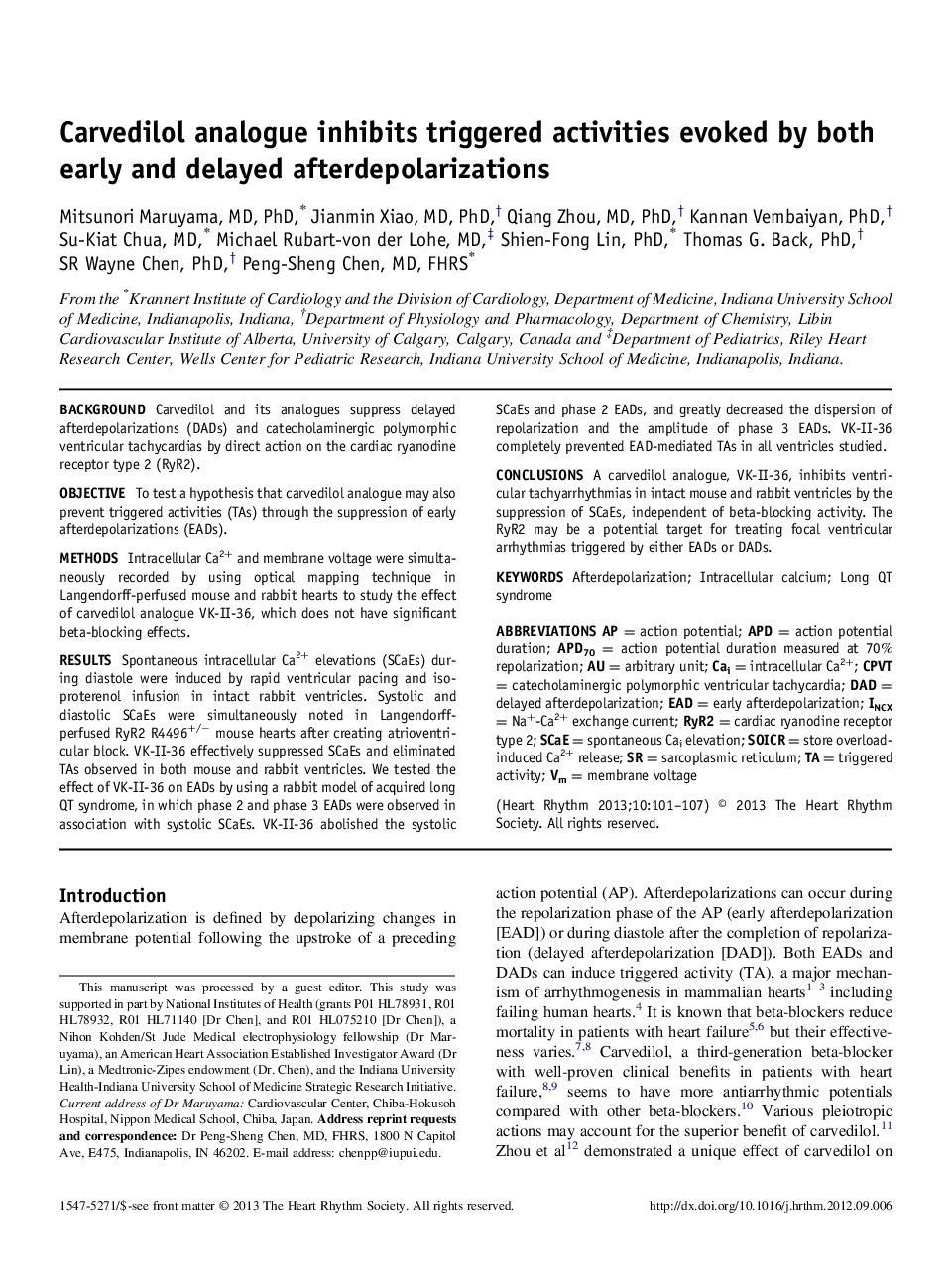| Article ID | Journal | Published Year | Pages | File Type |
|---|---|---|---|---|
| 2922692 | Heart Rhythm | 2013 | 7 Pages |
BackgroundCarvedilol and its analogues suppress delayed afterdepolarizations (DADs) and catecholaminergic polymorphic ventricular tachycardias by direct action on the cardiac ryanodine receptor type 2 (RyR2).ObjectiveTo test a hypothesis that carvedilol analogue may also prevent triggered activities (TAs) through the suppression of early afterdepolarizations (EADs).MethodsIntracellular Ca2+ and membrane voltage were simultaneously recorded by using optical mapping technique in Langendorff-perfused mouse and rabbit hearts to study the effect of carvedilol analogue VK-II-36, which does not have significant beta-blocking effects.ResultsSpontaneous intracellular Ca2+ elevations (SCaEs) during diastole were induced by rapid ventricular pacing and isoproterenol infusion in intact rabbit ventricles. Systolic and diastolic SCaEs were simultaneously noted in Langendorff-perfused RyR2 R4496+/− mouse hearts after creating atrioventricular block. VK-II-36 effectively suppressed SCaEs and eliminated TAs observed in both mouse and rabbit ventricles. We tested the effect of VK-II-36 on EADs by using a rabbit model of acquired long QT syndrome, in which phase 2 and phase 3 EADs were observed in association with systolic SCaEs. VK-II-36 abolished the systolic SCaEs and phase 2 EADs, and greatly decreased the dispersion of repolarization and the amplitude of phase 3 EADs. VK-II-36 completely prevented EAD-mediated TAs in all ventricles studied.ConclusionsA carvedilol analogue, VK-II-36, inhibits ventricular tachyarrhythmias in intact mouse and rabbit ventricles by the suppression of SCaEs, independent of beta-blocking activity. The RyR2 may be a potential target for treating focal ventricular arrhythmias triggered by either EADs or DADs.
